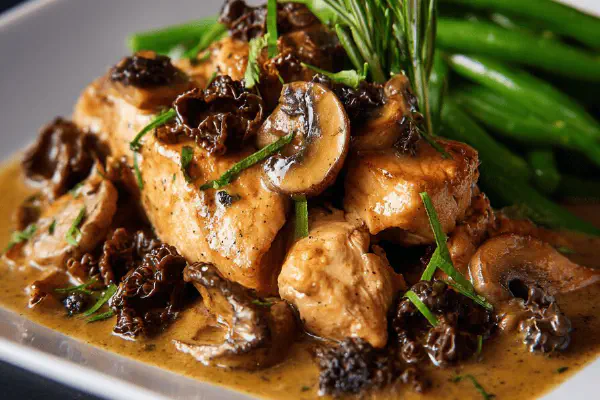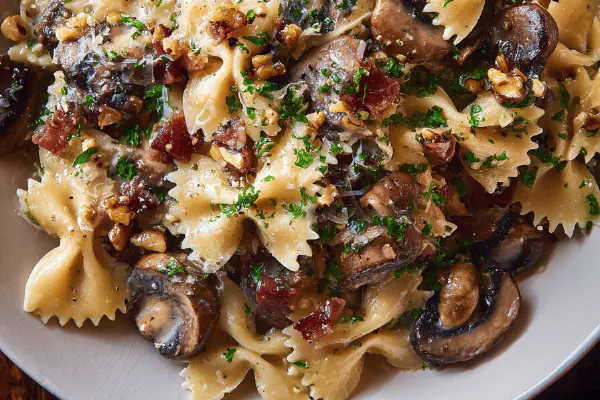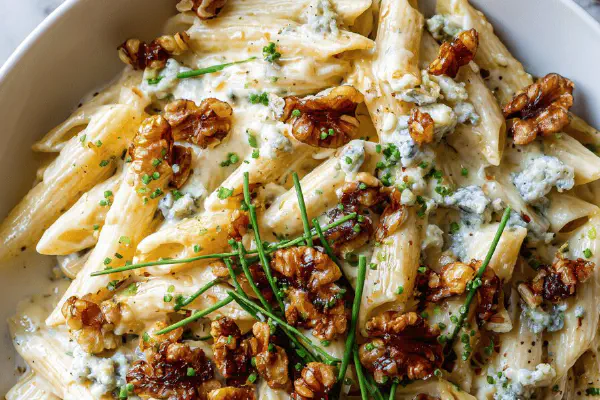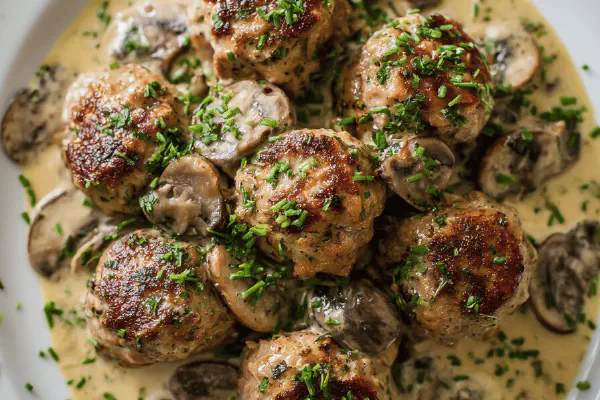Chicken Broccoli Tortellini

By Emma
Certified Culinary Professional
Ingredients
- 1 package four cheese tortellini (fresh or frozen)
- 2 cups fresh broccoli florets
- 2 tablespoons olive oil
- 1 pound boneless skinless chicken breast, cut into bite-sized pieces
- 2 tablespoons unsalted butter
- 1 small yellow onion, chopped fine
- 2 cloves garlic, minced fresh
- ½ teaspoon garlic powder
- ½ teaspoon salt, adjust to taste
- ¼ teaspoon black pepper
- 2 tablespoons all-purpose flour
- 2 cups low sodium chicken broth (can substitute with vegetable broth for twist)
- 1 cup heavy cream
- 1 cup shredded three-cheese blend plus ½ cup extra for garnish
- Optional twist substitution: swap half chicken for Italian sausage for smoky richness
About the ingredients
Method
- Start pasta water boiling vigorously. Drop tortellini in. Fresh is best, but frozen works fine. When pasta’s about 2 minutes from done, toss in broccoli florets. Both cook simultaneously, broccoli stays bright green-crisp, tortellini tender but not mushy. Drain both, keep warm.
- Heat olive oil in large skillet over medium-high heat. Add chicken pieces. Listen for persistent sizzle–when chicken edges golden and firm yet juicy inside, about 7-9 minutes, pull off heat. Don't crowd pan; do in batches if needed.
- Leave pan with fond. Turn heat down to medium. Add butter, then onions, garlic, garlic powder, salt, and pepper quickly. The smell when onions soften and garlic cooks but isn’t burnt is key to flavor depth–about 2 minutes max.
- Whisk flour into butter-onion mixture until all dry bits blend and coat the base evenly—paste-like. Cooking flour a bit avoids raw taste; look for a light golden color, no clumps.
- Slowly drizzle chicken broth while whisking madly. No lumps allowed. Sauce will start thin but keep whisking, simmer gently. Then pour in heavy cream. Heat till bubbles appear and sauce thickens, coats back of spoon. Around 4-6 minutes might vary based on heat.
- Stir in 1 cup shredded cheese. Cheese melts gradually, thickens sauce further, making it velvety. Pay attention: too high heat, cheese clumps; low heat, slow melt.
- Turn off heat. Return browned chicken pieces. Fold in drained tortellini and broccoli gently. Coating everything evenly yet not breaking pasta or bruising broccoli is important–stir softly, feel texture.
- Sprinkle remaining ½ cup cheese over skillet. Let sit a minute for cheese to soften on top; no heat needed here, residual warmth melts it gently.
- Taste, adjust salt or pepper if needed. Serve right away–cooling sauce thickens, texture shifts. If reheating leftovers, add splash of milk or broth to loosen up sauce.
Cooking tips
Chef's notes
- 💡 Start pasta water boiling hard. Timing broccoli addition matters. Toss in broccoli when pasta with 2 minutes left. Keeps broccoli bright green but cooked. Watch water boil high to avoid mushy pasta. Drain separately, keep warm. Fresh tortellini cooks faster than frozen, taste test frequently. Frozen needs more time but hold broccoli back a bit. Texture counts here. Don’t skip rinsing pan after chicken, fond holds flavor; keep it.
- 💡 Chicken browns best on medium-high heat. Sizzle tells you all. No crowding pan; batches work. Color changes chestnut brown with no gray spots; that’s when pull off heat. Residual cooking continues. Don’t rush with heat up or down too fast. Garlic and onions go in right after, smell is the sign. Cook till soft, not brown. Use garlic powder to boost if fresh garlic cameo is weak or late. Two minutes max, smell must pop but no bitter burnt.
- 💡 Roux matters here: whisk flour into butter-onion mix slowly. Must coat base with dry bits gone and paste-like. Light golden; no raw flour taste makes or breaks sauce. Pour broth gradually, whisk madly, lumps will kill. Sauce starts thin, simmer gently; bubbles small, heat medium low. Cream added later to cool temps slightly; keeps sauce from frantic boil. Cheese blend melts slow. Too hot clumps cheese, too low drags melting. Off heat stirring recommended for cheese addition.
- 💡 Fold chicken back off heat with drained tortellini and broccoli softly. Don’t stir hard, tough pasta breaks, broccoli bruises and turns dull. Gentle folding keeps everything intact, flavors mingle better that way. Then sprinkle remaining cheese on top, sit for a minute. Residual heat melts it to gooey curtain. No extra heat needed else cheese text spoils. Taste test before serving; salt and pepper might tweak. Remember sauce thickens as it cools.
- 💡 Substitutions: Italian sausage replaces half chicken for smoky depth but browns longer. Butter replaces olive oil for richer base. Broccoli frozen adds timing challenge; add earlier to boiling pasta water. Heavy cream swap half-n-half thins sauce; expect less richness. Cheese mix can vary - mozzarella, parmesan, asiago combos work best shredded fresh, last better melting than pre-shredded. Salt low sodium broth protects from over-salting. Always layer seasoning.
Common questions
When to add broccoli?
Near end of pasta cook. Two minutes left or so. Keeps broccoli crisp green. Add earlier for frozen broccoli. Overcook dulls color, mushes texture. Timing’s everything.
How to avoid cheese clumps?
Add cheese off heat is key. Melt slowly, low temps. Heat too high makes cheese grainy. Stir gently; slow melt. Use freshly shredded cheese, it blends better than pre-shredded coated stuff.
Chicken not browning properly?
Heat too low or pan crowded usually. Sizzle sound gone means no browning. Use medium-high, don’t crowd. Cook in batches. Browning flavor builds sauce depth. No fond, sauce flat.
Can leftovers be reheated?
Yes, but add splash milk or broth when reheating. Sauce thickens cold, dry reheated without liquid is clumpy or tight. Microwave or stovetop both okay. Stir often. Keeps sauce loose.



